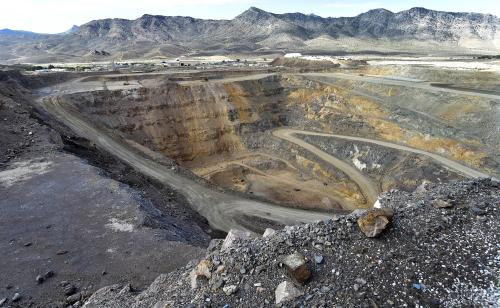Editor’s Note: In an interview with the National Bureau of Asian Research, Charles Ebinger outlines India’s current and future challenges in meeting electricity demand. Ebinger argues that without serious energy and electricity sector reform, India runs the risk of derailing its rapid economic growth.
National Bureau of Asian Research (NBR): What are India’s current and projected power-generation needs?
Charles Ebinger: Currently, India has the fifth largest electrical system in the world, with installed electricity capacity of around 180 GW. However, more than 400 million Indians have no access to electricity, and by 2035 India’s power demand is expected to more than double, providing a prodigious challenge for the country.
India’s electricity mix comprises 69% coal, 14% hydro, 10% natural gas, 4% oil, 2% nuclear, and 1% renewables (solar, wind, biofuels, waste, etc). While the amount of off-grid power in India is debatable, depending on one’s estimates, it can skew India’s electricity growth projections dramatically. India’s power deficit in 2010 at peak load was more than 10%. This needs improvement through more investment, particularly from the private sector, in generation, transmission, and distribution. While investment is beginning to occur, the rate at which this is occurring is woefully insufficient.
NBR: What are the most serious challenges India must overcome in its energy sector in terms of policy and natural endowment?
Ebinger: The most serious issue India must address is that the gap between energy demand and energy supply is wide and growing. Two reasons for this trend are demographics and economics: not only is India’s economy growing, thereby demanding more energy and electricity, but the population is as well. There is also massive urbanization, which is putting more pressure on energy and the environment.
India’s power network comprises five regions spanning the country. While each is connected with a neighboring region, there are inadequate interregional connections through high voltage transmission lines, creating difficulties for moving power from electricity surplus states to those in deficit. This also creates difficulties on a seasonal basis, as power is often in short supply during the dry season and abundant in some regions during the monsoon but cannot be moved to help other states.
An additional complication is that India’s investment in power transmission and distribution has not kept up with generation. Thus, in some cases, new generation cannot move to the market because of transmission bottlenecks, such as with wind power in Tamil Nadu.
India’s power sector is also plagued by the dual responsibility of the states and the federal government. Power produced and sold in the same state is subject to the oversight of the State Electricity Board and the State Electricity Regulatory Commission, whereas power sold between states is subject to federal oversight and regulation. As of September 2011, about 46% of generating capacity was owned by the states, 31% by central government institutions, and 23% by the private sector. Complicating this situation is that there are far too many state and federal institutions involved in energy decision-making. In the absence of a single institution responsible for the energy sector, comprehensive and sound policymaking is impossible.
Although domestic energy supplies exist, some are limited in amount (e.g., oil) and others (e.g., coal) are located in areas where they are geologically and technically hard to extract. In the case of coal, although India has large reserves, much of it is located far from demand centers or in areas where insurgencies affect production.
These issues are further exacerbated by the country’s policies, politics, and infrastructure. For instance, coal resources, far from their final market, must depend on India’s dilapidated railroad infrastructure that is prone to delays. Many power plants cannot get enough coal and must rely on the expensive spot market or risk power shortages. At a recent talk here in Washington, D.C., Vikram Mehta, Chairman of Shell India, mentioned that coal stocks at roughly 60% of India’s thermal plants were only enough for a seven-day supply. Many plants only have a one-day supply.
In the case of oil and natural gas, the problem is pricing and infrastructure. Because India’s government has not created a positive climate for foreign investors, the country’s reserves have not benefited from the best technology and expertise available. This hurts production. Whereas the average recovery rate of oil in the global petroleum industry is 40%, in India it is only 28%. One way India can promote exploration and production is through pricing reform: currently, private sector investors have no incentive to invest in India due to poor returns on investment. Similarly, the government has not invested enough in infrastructure: its gas pipeline network is woefully under-connected, and although the situation is slowly improving, large parts of India’s south and northeast are not connected to a gas grid.
Moreover, India must also enforce regulations against energy and electricity wastage and cheating. Often it is the wealthy landlords who waste free and cheap electricity rather than the poor farmers it was intended to help. Bribes are often paid to meter-readers, and many government and military buildings and offices pay no electricity fees at all. Providing regulators with enforcement capacity would dramatically curb consumption and increase efficiency.
One final issue is the land acquisition bill under debate in India. This bill must be comprehensive and fair to both owners and purchasers. Most importantly, however, it must be transparent and enforceable. While India’s energy sector is improving, the biggest problem for investors is that translucent regulations and processes drive up private sector costs. A clear and egalitarian bill can accelerate projects in the national interest while providing fair compensation for those displaced.
The Brookings Institution is committed to quality, independence, and impact.
We are supported by a diverse array of funders. In line with our values and policies, each Brookings publication represents the sole views of its author(s).



Commentary
India’s Energy Policy and Electricity Production
October 26, 2011